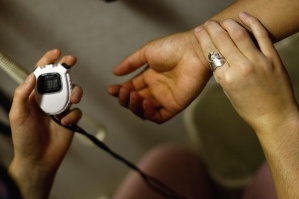Cholesterol level, Lipoprotein Profiie, Unsaturated Fat
From what you spread on your bread to the drugs that work, here’s how to get your cholesterol level low and keep it that way. The first step in monitoring your cholesterol levels is to get a lipoprotein profile test. After a 12-hour fast (which effectively means nil by mouth, after 8.30 pm the night before the test). Cholesterol level testing is definitely worthwhile if there’s been early onset heart disease in a relative, if you have other signs of potential cardiac strain (most often, high blood pressure), are unfit or smoke. The results are displayed in mill moles per liter (the molecular weight of cholesterol per liter of your blood). Ignore the baffling unit; the important bit is the number.
These are the Cholesterol Level you want to be hitting:
- Total Cholesterol Level : Less than 5.0 mmol/L (the national average is 5.8 mmol/L)
- HDL Cholesterol Level : 0.9-1.5 mmol/L
- LDL Cholesterol Level : Less than 3.0 mmol/L
- VLDL Cholesterol Level : Less than 2.3 mmol/L
(if your LDL and VLDL readings are above this, you may require immediate lifestyle changes).
Saturated and Unaturated Fat
A major misconception is that cholesterol comes directly from food there are actually very few foods containing dietary cholesterol. Raised levels are normally caused by too much of the wrong type of fat.
Avoid eating lots of saturated fat (found in lard, butter, cheese, full-fat milk, red meat and products which use these ingredients, such as pies, pastries, biscuits and cakes).
Food that are high in unsaturated fat can help reduce cholesterol levels, so eat oil fish, avocados, nuts (peanuts, almonds, walnuts).
Beware the hydrogenated vegetable oils lurking in processed foods and ready meals. Often referred to as “trans fat”, these are regarded by nutritionists as the worst dietary offenders. Although extra-virgin olive oil beats lard, palm and coconut oils every time, polyunsaturated fats (e.g. sunflower, rape seed and certain nuts oils are beneficial too. Reduce your fat intake by steaming and grilling rater than frying or roasting.
Prevent Cholesterol
If your cholesterol levels have gone through the roof, specialist help is an option. Your doctor may prescribe a cholesterol-lowering drug called a statin. These prevent an enzyme in the liver from manufacturing cholesterol so that less of it circulates in the bloodstream. Statins are now one of the frontline treatments for people with very elevated LDL or triglyceride levels, and studies suggest that treatment with these drugs can reduce the risk of having a fatal heart attack in the next five years by between 25 and 50 percent.
Spread the world Natural plant stanols and sterols are essential constituents of natural plant cell walls that are poorly absorbed by the human intestine. While not effective for everyone with raised cholesterol, dietary stanols (mainly from soy plants) can hinder the absorption of cholesterol in the small intestine, lowering total and LDL cholesterol in your blood by up to 10 percent.
Try a reduced-fat spread or yoghurt drink but bear in mind you’ll only benefit from between two to four grams of plant stanols per day. Anything above this isn’t harmful, it’s just a waste of money. Also give the label a steely appraisal: any food that promises to bash the LDL also needs to be low in saturated fat.

